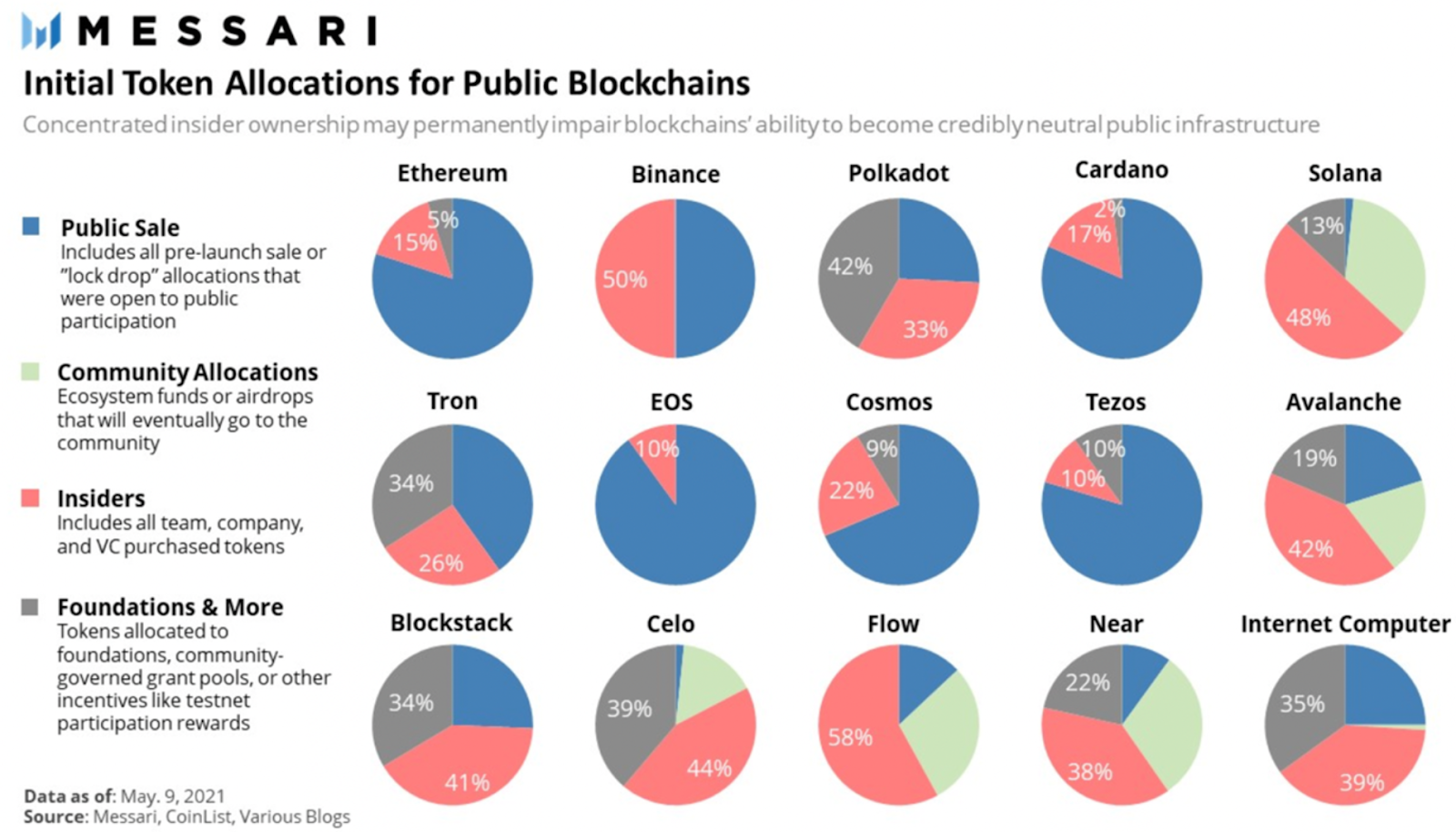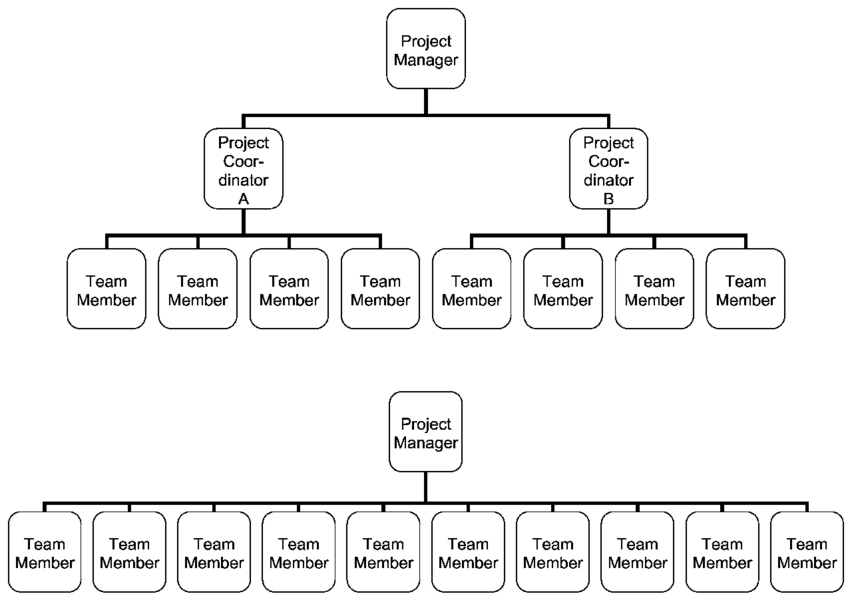The term “decentralization” has become a significant and reiterated buzzword throughout the Web3 space as it is immediately paired with being favourable. Often, blockchain protocols, applications, and networks utilize the term to establish successful marketing tactics. This helps to attract capital and users to an ecosystem.
The problem here is that many of web3’s top projects are not fully decentralized. To investigate this, decentralization must be defined and separated from a distributed system. Many cryptocurrency protocols and Web3 projects are distributed – but not all are decentralized.
Defining Decentralization
Decentralization refers to a form of organizational structure in which decision-making power is delegated from top management to middle or lower-sitting parties. In the case of Web3 protocols, decision-making power is given from founders and developers to the protocol’s supporters, users, node operators, and/or liquidity providers.
This differs from a distributed system. In a distributed system, the system itself is not concentrated but rather spread out across multiple locations and entities – most commonly nodes securing a network. This has nothing to do with decision-making, it just relates to the network infrastructure itself.
This is a very common misconception in many different projects’ functioning tokenomics and governance models. To achieve decentralization, it is not enough to simply distribute a portion of the tokens to the community or public. Those tokens must also carry an equivalent voting power to sufficiently give the community a respected voice within the Web3 project.
Investigating Core Web3 Protocols
To investigate which Web3 protocols are the most decentralized, it is necessary to measure the level of decentralization versus the level of distribution.
Organizations/protocols can be rated in the following matrix:

There are four key quadrants that emerge from the above matrix. They are:
- Concentrated & Centralized
- Distributed but Centralized
- Concentrated but Decentralized
- Distributed & Decentralized
Factors & Variables
It is important to acknowledge that the amount of variables necessary to accurately classify protocols is extremely high. Distribution relates to how accessible & widespread a project’s base asset is – generally its cryptocurrency or token. In this study, any entities that are not tokenized and rely on shares or privatization are classified separately as concentrated & centralized.
The more valuable a protocol’s market cap and the number of unique holders, the higher the reward level of distribution on the matrix.
Decentralization is much trickier as it combines multiple dynamic elements of a protocol, including:
- Token Distribution – This relates not just to the number of unique wallets for a protocol but the number of unique, real-life holders of a project. Keep in mind that a single entity can control multiple wallets. So for example, Web3 projects that launched with pre-mined tokens for a group of seed investors, token distribution is naturally lower.
- Governance & Decision-Making – True decentralization lies with the amount of decision-making power the average user has over a Web3 protocol. A key point to emphasize here – participation in governance is not sufficient enough by itself to make a protocol decentralized. For most protocols, token ownership is directly related to voting power. An unequal distribution makes for a centralized governance model.
- Protocol Functionality – For many protocols, governance isn’t necessarily immensely important to functionality and the average user’s ownership of a token. If a protocol is immutable, meaning the core functionality cannot be changed through governance, it has a higher degree of decentralization versus a project that can be controlled entirely through a token.

Classifying Web3 Projects by Decentralization
Web3 protocols can be broken down into one of three core categories. Those categories are:
- Centralized
- Decentralized
- In the Middle
Centralized
Projects that fall here are generally lacking adoption and protocol governance is typically highly skewed towards large holders (generally early backers). Many projects, such as a number of Layer 1 smart contract platforms, were initially funded through privatized token sales. This allowed venture capitalist firms, hedge funds, and institutional investors to obtain a significant share of the outstanding tokens of these projects prior to public launch.
Additionally, limits in governance typically go along with these private token sales. A popular form of Proof-of-Stake (PoS) consensus is that of Delegated-PoS. This means that users holding a token can choose to be delegated through validators on the blockchain, generally being the largest token holders running nodes. This allows the majority of users to “participate” in governance but gives them little direct influence over the protocol.
This is similar to direct governance models that delegate voting power based on the number of tokens staked. So, the holders with the greatest amount of tokens (generally early backers, developers, etc.) have considerably more voting power than the average user.
There are quite a few Web3 protocols that fall into this category, including:
- Solana (SOL)
- NEAR Protocol (NEAR)
- Algorand (ALGO)
- MakerDAO (MKR)
- Internet Computer (ICP)
Within the centralized category also falls centralized exchanges (CEXs) for obvious reasons. There is separation between Coinbase and other exchanges like Binance solely due to Coinbase not offering an actual token.
Along with Coinbase are other corporations *& companies that utilize tall (centralized) organizational structures such as:
- Coinbase
- Apple
- Intel
- IBM
- Meta

Decentralized
Web3 protocols that are more decentralized give the users more control over how they utilize the protocol and to what decision-making power they have over its functionality. The two assets here that are the most obvious are Bitcoin and Ethereum. Bitcoin is the world’s first peer-to-peer electronic payment network and is secured through Proof-of-Work consensus requiring computational power to mine new bitcoins.
Ethereum is the world’s most highly distributed and decentralized blockchain smart contract network – the original Layer 1. With thousands of nodes participating in securing the network and thousands more applications already built on top of its blockchain, Ethereum is the best example within the crypto economy of a decentralized Web3 protocol.
Other projects that function with a high degree of decentralization – regardless of overall adoption – are the following:
- Chainlink (LINK)
- The Graph (GRT)
- THORChain (RUNE)
- Aave (AAVE)
- Ampleforth (AMPL)
- Uniswap (UNI)
- Polygon (MATIC)
In the Middle
There are a number of projects that fall right into the middle in terms of their level of decentralization. There are a large number of variables that come into play, making it more difficult to classify these projects wholeheartedly one way or the other.
The majority of these projects utilized private funding to get started but are building out decentralized functionality or assisting ecosystem development catering to decentralized functions for everyday users. Project age, overall adoption, and market dynamics all play a role in these projects.
Examples of projects in the middle include:
- Polkadot (DOT)
- Cardano (ADA)
- Avalanche (AVAX)
- Axie Infinity (AXS)
- Decentraland (MANA)
Final Analysis
Web3 projects have been placed on the original matrix above in relation to the following discussed factors:
- Accessibility
- Adoption
- Token Distribution
- Protocol Functionality
- Governance Mechanisms
The following represents the Web3 matrix in terms of distribution versus decentralization:

Keep in mind that due to the extreme amount of variables, it is difficult to accurately gauge each and every project from the same lens. Also, the above matrix is not accurate to scale. Consider projects grouped together to be similar in terms of distribution and/or decentralization.
Overall, the majority of web3 protocols are working towards or actively contributing to the greater Web3/cryptoeconomic space. Some protocols are doing this in a much more decentralized way than others, such as Ethereum’s high rate of node participation versus Algorand’s more centralized governance mechanism.
Web3 as a whole has a substantial number of actively contributing projects that hold appropriate levels of decentralization over the previous web2 iteration of the internet.
- "
- &
- a
- accessible
- accurate
- Achieve
- across
- ADA
- Adoption
- ALGO
- All
- allows
- already
- Amazon
- amount
- applications
- appropriate
- asset
- Assets
- average
- become
- being
- BEST
- between
- binance
- Bitcoin
- blockchain
- Building
- capital
- carry
- case
- Category
- centralized
- Choose
- coinbase
- Coindesk
- come
- Common
- community
- Companies
- computer
- Confluent
- Consensus
- Consider
- contract
- contributing
- control
- Core
- Corporations
- crypto
- cryptocurrency
- Decentralization
- decentralized
- developers
- Development
- different
- difficult
- direct
- directly
- distributed
- distribution
- down
- dynamic
- dynamics
- each
- Early
- economy
- ecosystem
- Electronic
- elements
- entities
- entity
- establish
- etc
- ethereum
- everyday
- example
- Exchanges
- extreme
- factors
- firms
- First
- following
- form
- founders
- from
- function
- functionality
- functioning
- functions
- funded
- funding
- funds
- generally
- governance
- greater
- greatest
- Group
- Hedge Funds
- helps
- here
- High
- higher
- highly
- hold
- holders
- holding
- How
- HTTPS
- immediately
- immensely
- immutable
- important
- include
- Including
- Infinity
- influence
- Infrastructure
- Institutional
- institutional investors
- Internet
- investigate
- Investors
- IT
- itself
- Keep
- Key
- large
- largest
- launch
- launched
- layer
- Level
- levels
- limits
- LINK
- Liquidity
- liquidity providers
- little
- locations
- Majority
- make
- MAKES
- Making
- management
- Market
- Market Cap
- Marketing
- Matic
- Matrix
- meaning
- means
- measure
- mind
- MKR
- model
- models
- more
- most
- multiple
- Near
- necessarily
- necessary
- network
- networks
- nodes
- number
- obvious
- offering
- operators
- organizational
- Other
- overall
- ownership
- participation
- payment
- peer to peer
- Play
- Point
- Popular
- PoS
- power
- previous
- private
- Problem
- project
- projects
- Proof-of-Work
- protocol
- protocols
- providers
- public
- reasons
- refers
- represents
- respected
- Role
- running
- sales
- same
- Scale
- Secured
- seed
- Share
- Shares
- significant
- similar
- single
- smart
- smart contract
- So
- SOL
- some
- Space
- spread
- started
- Study
- substantial
- successful
- system
- tactics
- terms
- The
- thousands
- three
- Through
- throughout
- together
- token
- tokenized
- Tokens
- top
- towards
- typically
- unique
- users
- utilize
- venture
- Versus
- Voice
- Voting
- Wallets
- Web3
- What
- widespread
- within
- working
- world’s













